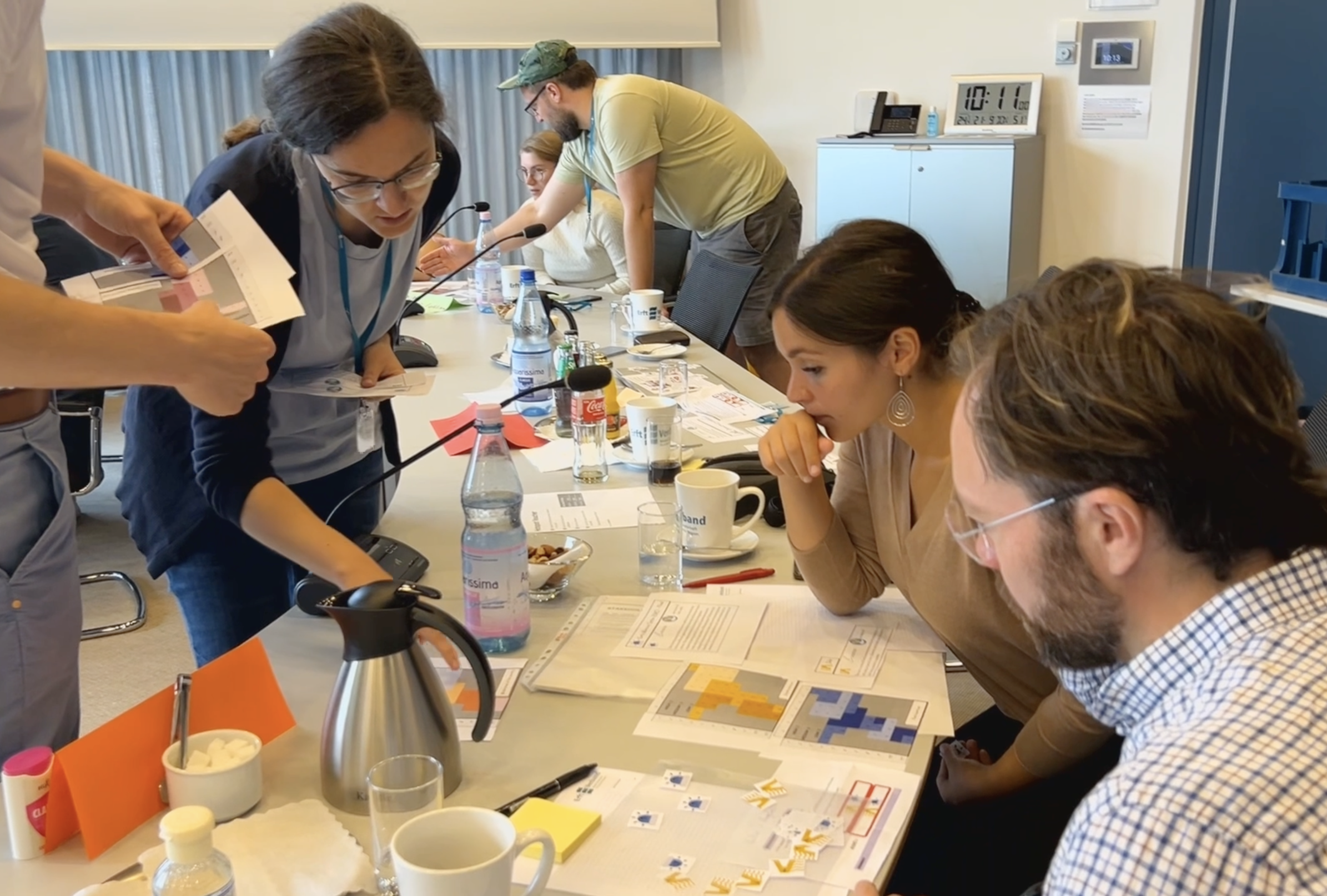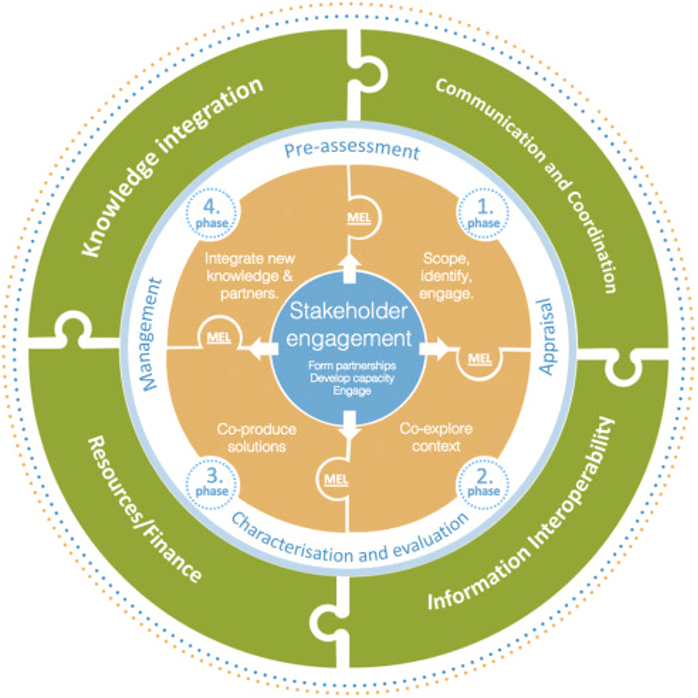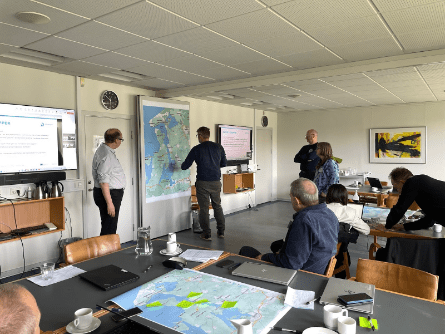Tailormade, Applicable and Iterative - The Key Tenets of the Risk-Tandem Framework

By Benjamin Hofbauer; Jacob Huling; Pia-Johanna Schweizer
Disaster Risk Management (DRM) is often shaped by disciplinary silos, leading to deep but narrow perspectives on what disasters involve. For example, approaches may concentrate on economic impacts or emphasize “grey infrastructure” solutions such as dams and levees. These strategies tend to frame resilience in terms of fixed, singular responses to extreme weather events. While valuable, this focus can overlook the broader societal and governance dimensions of disasters, and may view extreme weather as isolated incidents rather than ongoing challenges in a warming climate. This creates a gap between the long-term planning needed for climate adaptation in the face of increasingly frequent and severe events, and the more immediate practices of local disaster risk management.
In order to bridge this gap between the management of disasters, and the long-term planning for climate change and sustainable resilience, the Horizon Europe project DIRECTED has built a co-creative risk governance framework that integrates DRM measures and long-term climate change adaptation (CCA) strategies. Accordingly, the Risk-Tandem Framework provides a set of questions, as well as a data toolkit (i.e., the Data Fabric), to guide the user towards thinking about disaster risk management and climate change adaptation as interrelated, potentially synergistic processes. Building on state-of-the-art co-production approaches – particularly ‚the Tandem process‘ – and research in systemic risk governance, the Risk-Tandem Framework provides a practical toolkit to support decision-making and planning in risk management. Developed in collaboration with disaster risk practitioners and decision-makers, it is designed to be directly applicable in real-world contexts. Accordingly, the framework emphasises usability, modularity, and iteration.
Usability: At its core the framework consists of a number of questions that each correspond to a given indicator, helping the user identify potential issues, gaps, and leverage points in the DRM and CCA strategy they are examining. Answering these questions requires no specific expertise or technical knowledge. Instead, it builds on the user’s context – how well they are involved in the existing structures, the focal points and interests they have, where they identify gaps, etc., will all be reflected in the way these indicators are applied and answered.
Modularity: While the questions open a broad space for consideration and improvement, not every indicator and subsequent question might be interesting for each situation. Accordingly, the Risk-Tandem Framework offers a tailormade approach towards any DRM and CCA context that it is applied to – if the user would like to focus on the participatory and inclusive aspects of their process, they can single out the respective indicators without having to run through the entire framework.
Iteration: Finally, the Risk-Tandem Framework’s iterative structure ensures dynamism and reflection. Namely, governance contexts may change over time, and institutional norms and dynamics might shift throughout various administrations and legal structures. The Risk-Tandem Framework’s focus on Monitoring, Evaluation, and Learning accordingly ensures continuous development to meet evolving challenges and deal with them dynamically.

Figure 1. Risk Tandem Framework
In short, the Risk-Tandem Framework offers a set of scientifically grounded questions and lines of inquiry that aid the use in better understanding the existing DRM context, and finding ways to integrate that context with CCA strategies, while also continuing development in the face of evolving challenges. Showing its applicability, the Framework has been applied to various real-world contexts, e.g. the DIRECTED Project’s “Real World Labs”. These Real-World Labs (RWL) are selected regions within Europe, represented by local “RWL hosts”, who all seek to improve and integrate DRM and CCA measures. The application has led to some key-insights regarding the potential to improve and integrate existing DRM and CCA measures in the capital region of Denmark, the Emilia-Romagna region in Italy, Vienna in Austria, the Zala region in Hungary, and the Rhine-Erft region in Germany.
In the case of the capital region of Denmark, there is an important challenge to improve and streamline inter-municipal communication. While Denmark is well-prepared in terms of climate adaptation, the need to further develop existing inter-institutional communication and knowledge sharing is key to keep up with the increased risks of a changing climate. In the case of Italy, the stakeholders and hosts highlight the need for better integration of monitoring networks and knowledge-sharing, and the management and storage of existing data would benefit from a more centralised approach.

Figure 2. Risk Tandem Tools being used at local level in Copenhagen
In the context of the City of Vienna, there was a general interest by stakeholders to better integrate private actors, such as the insurance sector, into the public risk communication domain. It was also pointed out that the improvement of DRM and CCA integration will require fostering inter-institutional communication and engagement.
In the Zala region in Hungary, the main focus was to improve cross-institutional coordination, and implement existing, but as of yet unrealised, plans for climate adaptation.
Finally, the Rhine-Erft stakeholders focused on further building on the existing exchange with districts and experts, as well as developing tools for the integration of CCA scenarios into existing models.
These insights were all collected through continuous, co-creative exchanges such as workshops, tabletop exercises, serious games, and many other forms of engagement. An extensive assessment of each RWL through the lens of the Risk-Tandem Framework and the concomitant forms of engagement, will be presented in the upcoming DIRECTED Governance Report, namely “Updated Risk-Tandem Framework for Governance Processes and Interoperability”. This report includes a step-by-step application of the Framework to the individual RWLs, and examines in depth the development of the various indicators and underlying DRM and CCA questions that ground them, ensuring that the framework can be meaningfully applied in practice to strengthen governance processes.
Learn more about DIRECTED and the Real World Labs: https://directedproject.eu/about/
For more information about the Risk Tandem Framework contact: Benjamin Hofbauer at benjamin.hofbauer@rifs-potsdam.de

